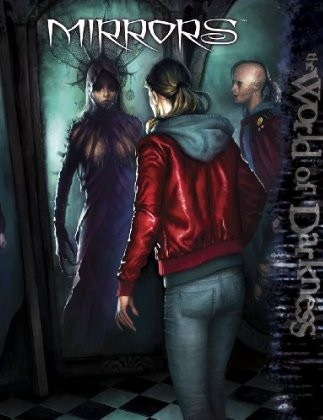The World of Darkness is best when it abandons objective truth. Luckily, the new World of Darkness is built on the kind of book where the “Abandon All Canon Ye Who Enter Here” logic creeps in, and the game is vastly the better for it. Whether you play an out of the box World of Darkness game, a modern horror game using the Storyteller mechanics, flip through the books to find system neutral ideas for another game entirely, or if like me you use bits and pieces to run a dark fantasy game, we all win when the World of Darkness plays fast and loose with canon.
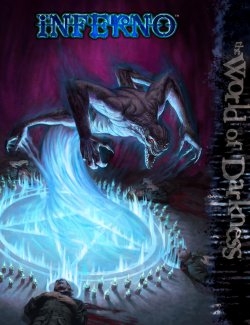
The old World of Darkness—the world of Vampire: the Masquerade and Werewolf: the Apocalypse—gave way to the new World of Darkness, where the Masquerade was replaced by the Requiem, the Apocalypse by the Forsaken. A big part of the shift was mechanical, replacing some core rules that resulted in statistical anomalies, and another part was streamlining, winnowing the wheat from the chaff, going from thirteen vampire clans and werewolf tribes to five for each, with the same logic carried through to Mage, as it went from the Ascension to the Awakening. Still, that wasn’t the part that caught everyone’s attention; what people were talking about was how the new World of Darkness was getting rid of the metaplot.
Personally, I never minded the metaplot because…well, because I ignored it most of the time. I saw the metaplot as sort of “White Wolf’s story,” and while at points I was charmed by it—Ends of Empire was a great book, and the onrushing armageddon created a tense atmosphere—I felt free not to pay any attention to it when running my own game. A much bigger problem for me was the philosophy of “filling in the nooks,” where every tiny corner of the world and era of history was labeled and accounted for, sometimes in overlapping and contradictory ways. The old World of Darkness was crowded, and because of the “escalating mystery” where each book tried to one-up the last in terms of even more secret even more magical back story, it just didn’t feel like there was a lot of room left to tell new stories.
All that is blissfully gone in the new World of Darkness. From a default position the game assumes that everything in a sourcebook is something you might use. That little ontological gem is something that carries through the entire publishing line, making it all the stronger. As I mentioned before, when that attitude reaches its apotheosis, the World of Darkness really soars, both in the broad context of the entire line, the narrower context of a single game line, or in the most specific of contexts, in a single book that provides an optional tweak, critter, or paradigm.
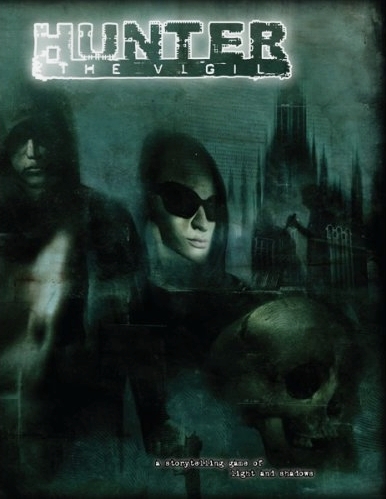 Books like Armory Reloaded, Second Sight and Reliquary are great examples of the first sort (as is previously mentioned Mirrors). Armory Reloaded provides dozens of optional combat mechanics that you can feel free to house rule into your game, or even just use for a single session. Want grittier combat? More cinematic combat? Less lethal combat? You can pick and choose, which is exactly the kind of “tool box” approach that I want from a sourcebook. Reliquary provides rules for “magic items” in a horror context, from crystal skulls to Shakespeare’s lost play about witches, along with rules for making your own artifacts. Second Sight has rules to add psychics and non-Mage magicians to your game by using Merits. You don’t need these books to play the game, but they provide options, which makes them invaluable.
Books like Armory Reloaded, Second Sight and Reliquary are great examples of the first sort (as is previously mentioned Mirrors). Armory Reloaded provides dozens of optional combat mechanics that you can feel free to house rule into your game, or even just use for a single session. Want grittier combat? More cinematic combat? Less lethal combat? You can pick and choose, which is exactly the kind of “tool box” approach that I want from a sourcebook. Reliquary provides rules for “magic items” in a horror context, from crystal skulls to Shakespeare’s lost play about witches, along with rules for making your own artifacts. Second Sight has rules to add psychics and non-Mage magicians to your game by using Merits. You don’t need these books to play the game, but they provide options, which makes them invaluable.
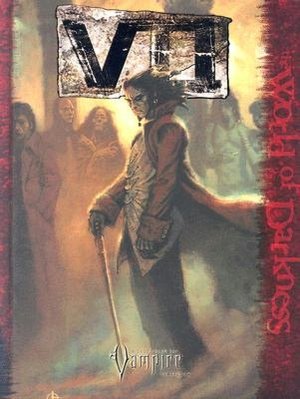 Within a game line, the ideology of presenting non-canon options and letting the Storyteller take their pick flourishes. Take Vampire: the Requiem for example. There are groups like VII that are presented as essentially enigmatic in the bulk of the published material. They are the killers of killers, the vampires who assassinate other vampires…but what is their deal, man? Well, their sourcebook, VII doesn’t so much tell you as provide three different possible answers to that question. Take your pick, or cannibalize them for your own take, or…well, do whatever you want, it is your game! Other books are even more extreme; Mythologies—another personal favorite—presents possible origins of the vampire condition, various alternate modes of vampirism and new spins on the vampiric myth, and a host of strange antagonists and curses.
Within a game line, the ideology of presenting non-canon options and letting the Storyteller take their pick flourishes. Take Vampire: the Requiem for example. There are groups like VII that are presented as essentially enigmatic in the bulk of the published material. They are the killers of killers, the vampires who assassinate other vampires…but what is their deal, man? Well, their sourcebook, VII doesn’t so much tell you as provide three different possible answers to that question. Take your pick, or cannibalize them for your own take, or…well, do whatever you want, it is your game! Other books are even more extreme; Mythologies—another personal favorite—presents possible origins of the vampire condition, various alternate modes of vampirism and new spins on the vampiric myth, and a host of strange antagonists and curses.
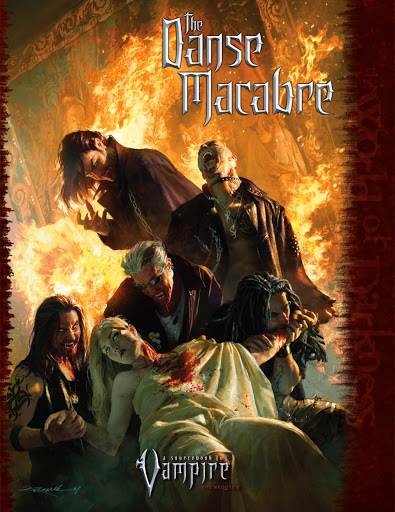 Danse Macabre similarly provides new takes on old organizations, like the pseudoscientific Ordo Dracul reimagined as a 1%er motorcycle club called the Brides of Dracula, brand new organizations—the Holy Engineers read like insane rantings, receiving messages from the Angel of Death via the God Machine in Orion’s Belt—and a bunch of new rules for replacing Humanity with Atrocity, or anchors to loved ones, or as a system for developing new vampiric weaknesses. Magnificent. Requiem Chronicler’s Guide has a lot of the same stuff, as well. Use them if you want, ignore them if you don’t, or more likely than either bust the ideas apart like Legos and use them to build something new.
Danse Macabre similarly provides new takes on old organizations, like the pseudoscientific Ordo Dracul reimagined as a 1%er motorcycle club called the Brides of Dracula, brand new organizations—the Holy Engineers read like insane rantings, receiving messages from the Angel of Death via the God Machine in Orion’s Belt—and a bunch of new rules for replacing Humanity with Atrocity, or anchors to loved ones, or as a system for developing new vampiric weaknesses. Magnificent. Requiem Chronicler’s Guide has a lot of the same stuff, as well. Use them if you want, ignore them if you don’t, or more likely than either bust the ideas apart like Legos and use them to build something new.
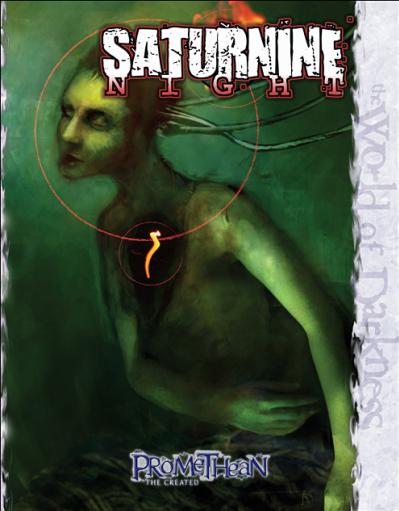 I know I’m talking about Vampire a lot, but that is just because it is my particular poison. The other lines are the same way; heck, Promethean: the Created with it’s “alchemy and hobo signs” flair,is one of the limited lines, with only five books, and three of those books—Magnum Opus, Strange Alchemies, and Saturnine Night—are all collections of possible rules, of theoretical new types of animated undead, previously unknown subtypes of the existing lineages, strange nuclear creatures, and science-fiction Frankenstein Monsters. Personally, I ignore the monsters and give powers out of them to any kind of science fantasy monster that I feel like. Heck, if you squint at the Hunter: the Vigil rules on Dread Powers and the supernatural, that whole game is built to use all the other books as optional, which is an ethos I can get behind.
I know I’m talking about Vampire a lot, but that is just because it is my particular poison. The other lines are the same way; heck, Promethean: the Created with it’s “alchemy and hobo signs” flair,is one of the limited lines, with only five books, and three of those books—Magnum Opus, Strange Alchemies, and Saturnine Night—are all collections of possible rules, of theoretical new types of animated undead, previously unknown subtypes of the existing lineages, strange nuclear creatures, and science-fiction Frankenstein Monsters. Personally, I ignore the monsters and give powers out of them to any kind of science fantasy monster that I feel like. Heck, if you squint at the Hunter: the Vigil rules on Dread Powers and the supernatural, that whole game is built to use all the other books as optional, which is an ethos I can get behind.
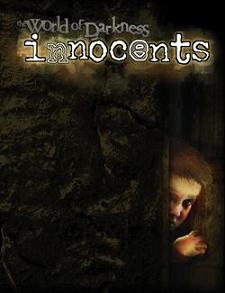 Then there are books like Innocents. Big idea books that exist untethered to the core setting or any particular game. Innocents is a rule set for how to play children in the World of Darkness, giving you the tools to build campaigns that vary in tone from The Goonies to The Exorcist or Let the Right One In. Similarly, Inferno has unique rules for playing mortals touched by the diabolical. From infernal pacts to demonic possession, Inferno has suggestions how it can be run stand-alone or integrated with one or all of the other game lines. Book of the Dead has rules on the Underworld—as a big fan of the old World of Darkness game Wraith: the Oblivion’s grim afterlife, I picked this one right up—and how it can be integrated into the cosmology of your game…if you want to. Which really is the point, at the end of the day. It is our game, the Game Master and the Player’s. Providing a modular world lets your customer use the product in the way most effective for them. To tell the story we want to tell.
Then there are books like Innocents. Big idea books that exist untethered to the core setting or any particular game. Innocents is a rule set for how to play children in the World of Darkness, giving you the tools to build campaigns that vary in tone from The Goonies to The Exorcist or Let the Right One In. Similarly, Inferno has unique rules for playing mortals touched by the diabolical. From infernal pacts to demonic possession, Inferno has suggestions how it can be run stand-alone or integrated with one or all of the other game lines. Book of the Dead has rules on the Underworld—as a big fan of the old World of Darkness game Wraith: the Oblivion’s grim afterlife, I picked this one right up—and how it can be integrated into the cosmology of your game…if you want to. Which really is the point, at the end of the day. It is our game, the Game Master and the Player’s. Providing a modular world lets your customer use the product in the way most effective for them. To tell the story we want to tell.
Mordicai Knode is a big fan of using the new World of Darkness for things like zombie survival or escape the slasher, rather than the typical “you play the monster” game. His Tumblr is usually filled with pictures to nap as props for those games, and you can hit him up on Twitter to tell him about your game.










